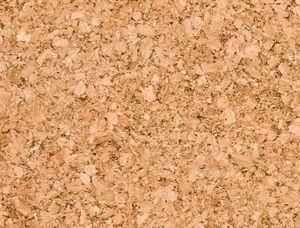
Cork is an absolutely naturally occurring flooring material and does not contain any artificial or man-made components in it. It is harvested from the bark of the cork tree which is an evergreen oak tree widely grown in southwest Europe and northwest Africa. It is considered as environment friendly because even though it is obtained from tree bark, it does not cause any harm to the tree. This is possible as the outer layers of the bark is simply taken out without damaging its inner layers. The unique characteristic of this tree is that the used portion of its bark grows back quite fast and the tree will be ready for another harvest within 10-12 years. The usable bark can be derived from the tree for 200 years. Thus we can get material for flooring purpose for so many years.
Facts on Cork Flooring
Cork possesses some amazing qualities that makes it a suitable flooring option for homes, library church and office. Some important facts about its properties are as follows:
- The basic structure of cork is so unique that its cells can trap large quantity of gas or air within it. This makes it an easily compressible material. Thus, it gives a soft and comfortable feel under the feet.
- It has excellent resilience. That means, when it gets pressed, it can regain its original shape all over again as soon as the pressure is released. Now, suppose, if it is hit by any heavy object or pressed by furniture, then it does not get any dent or crack on its surface which is quite usual on hard floors like tile or wood. This property makes it a highly durable material. In fact, once you install cork flooring, it can last for several decades.
- It provides amazing insulation. Again, this property is owing to its cellular structure. The entrapped air prevents transmission of hot or cold temperature from the underlying surface to the top of the floor. Thus, it gives a natural warmth to the interiors. Moreover, it can absorb noise and vibrations and thus provides sound insulation as well.
- Other wood flooring options tend to attract lot of termites, mold, mildew, etc. However, such insects and fungi do not attack cork flooring. This is because the bark of cork tree contains a natural waxy substance called suberin that acts as protective barrier against their infestations.
- Those who suffer from allergies and asthma can safely use cork flooring in their homes as it is known to be hypoallergenic as it does not have any irritants or harmful chemicals in them. It is also regarded as antistatic material which means that it does not allow pollen or dust to stay on its surface. It not only prevents growth of mold and mildew but also has strong resistance towards other harmful bacteria and pests. Thus it is a good option from hygiene point of view as well.
- It is highly resistant towards fire. Most importantly, even when it burns, it does not emit any harmful fumes or gases.
- The major drawback of cork flooring is that it cannot be cleaned with any regular commercial cleaning products that are available in the market. Thus, cleaning cork flooring is one big problem. The only option available with you for floor cleaning is damp mopping. There is a specially designed paste available that can be used for this purpose but it requires a lot of time and effort for the job.
After reading all these cork flooring facts about its outstanding features, if you are interested in installing it in your home, then let me tell you that you have a wide variety of choices in terms of colors and patterns. As it does not have any grains on its surface, manufacturers get the scope to create various patterns. Many people prefer to use it for kitchen flooring as it does not get damaged by liquid spills and has a non-slip surface.





